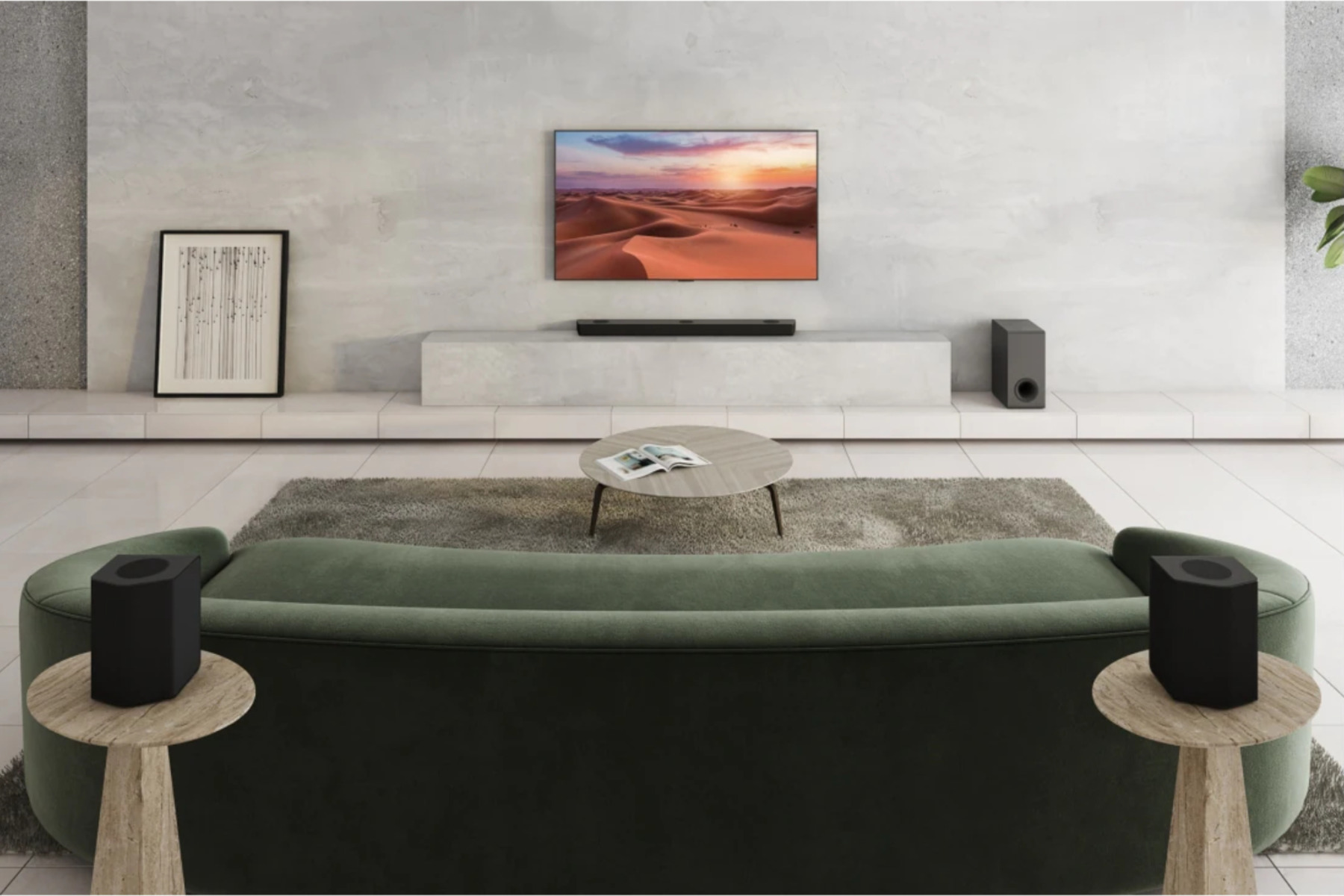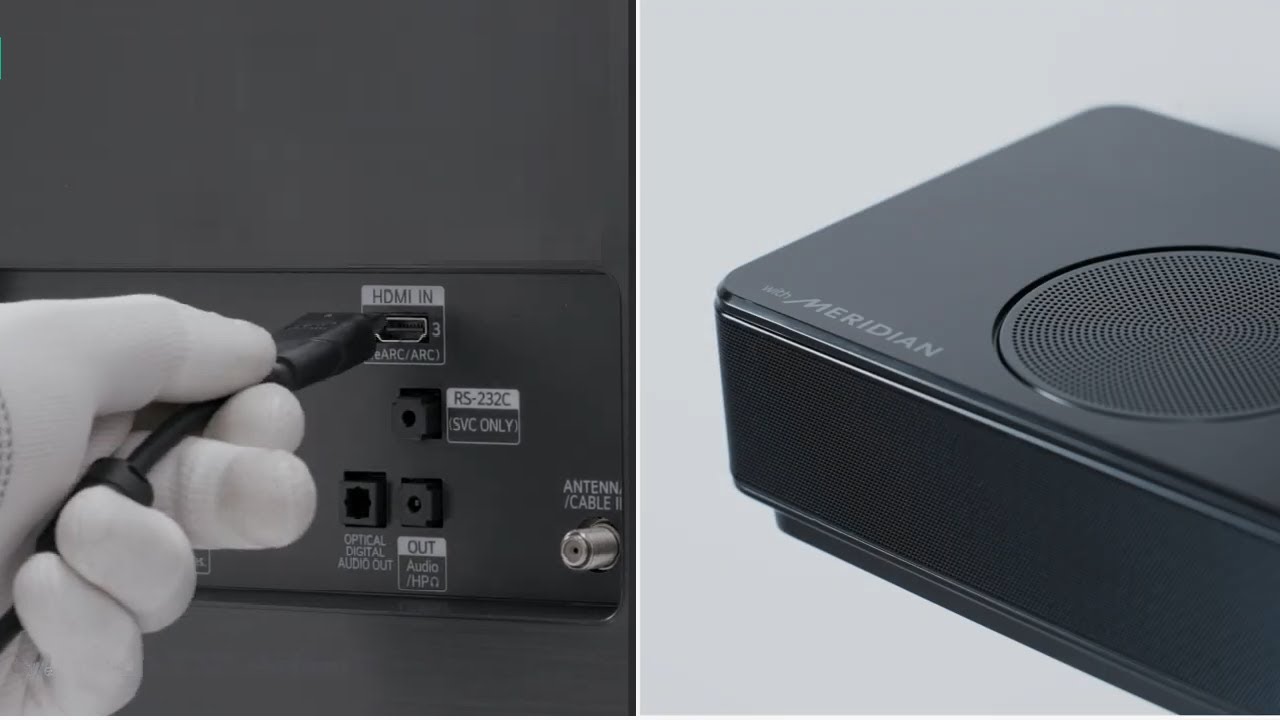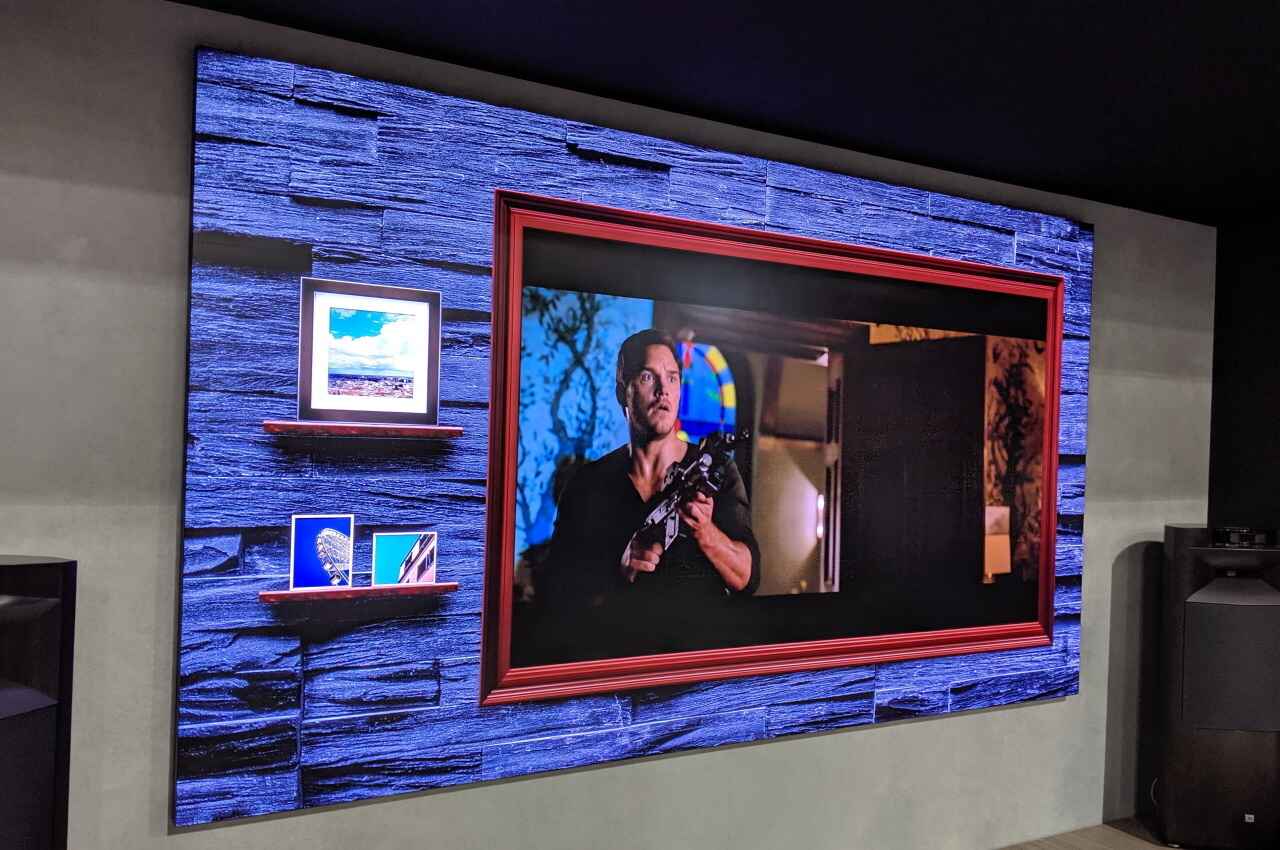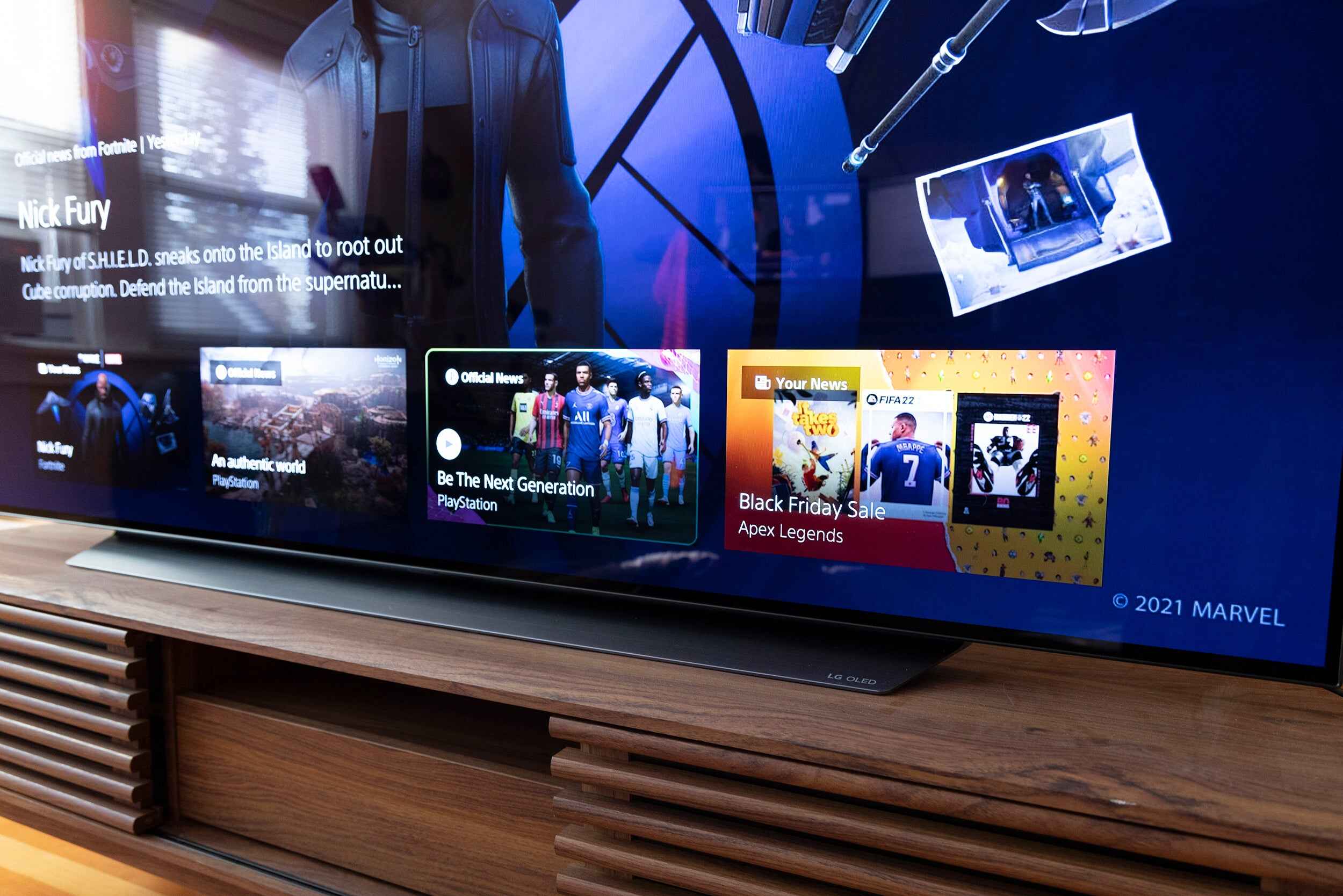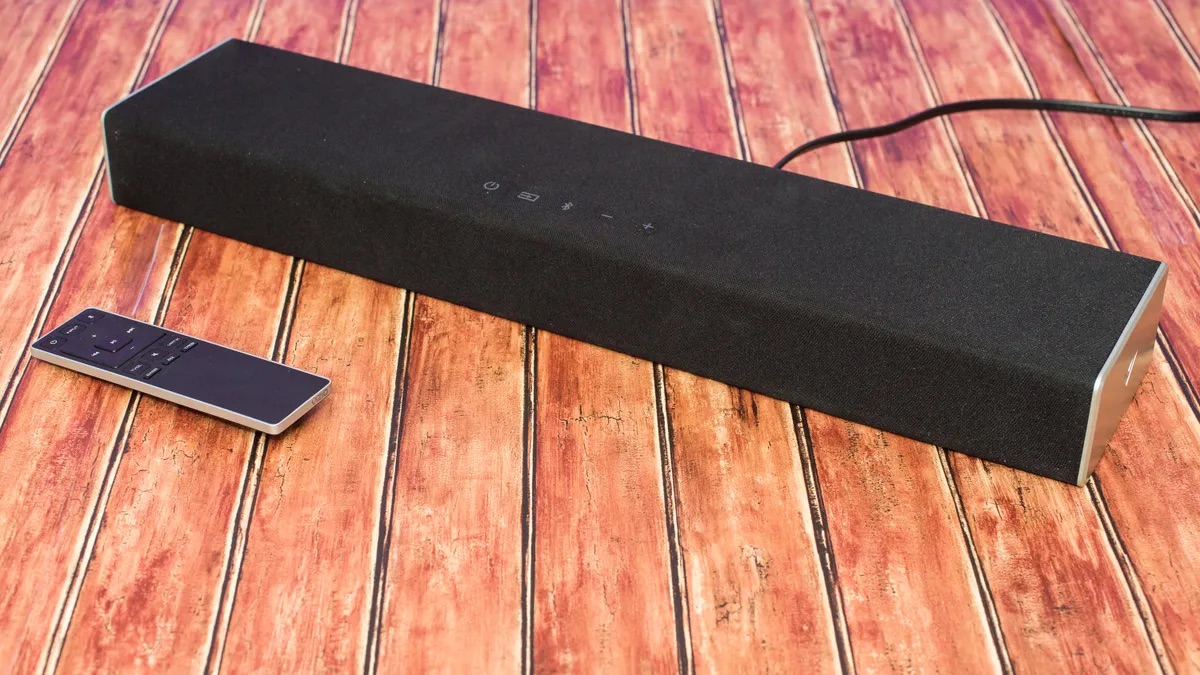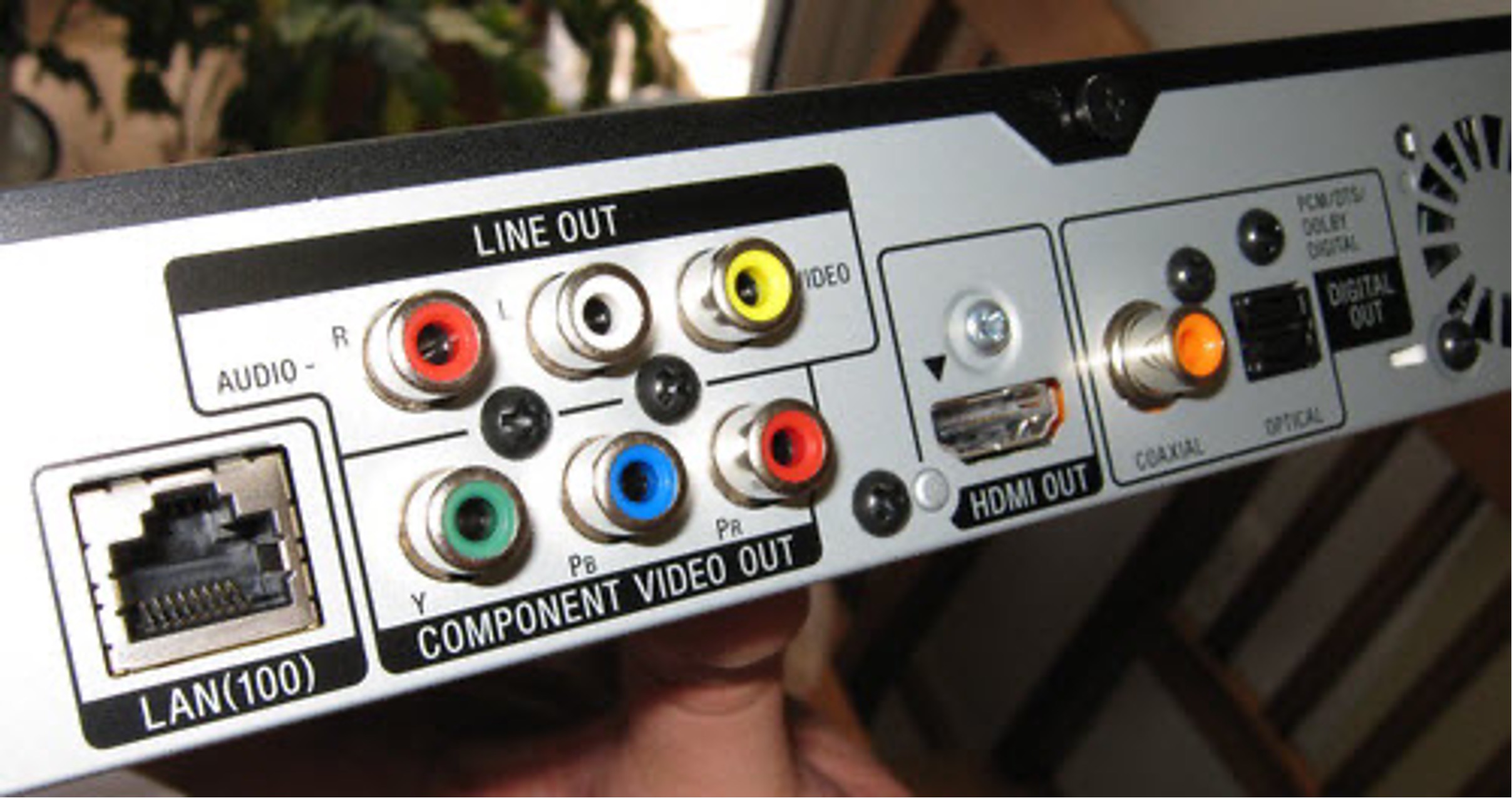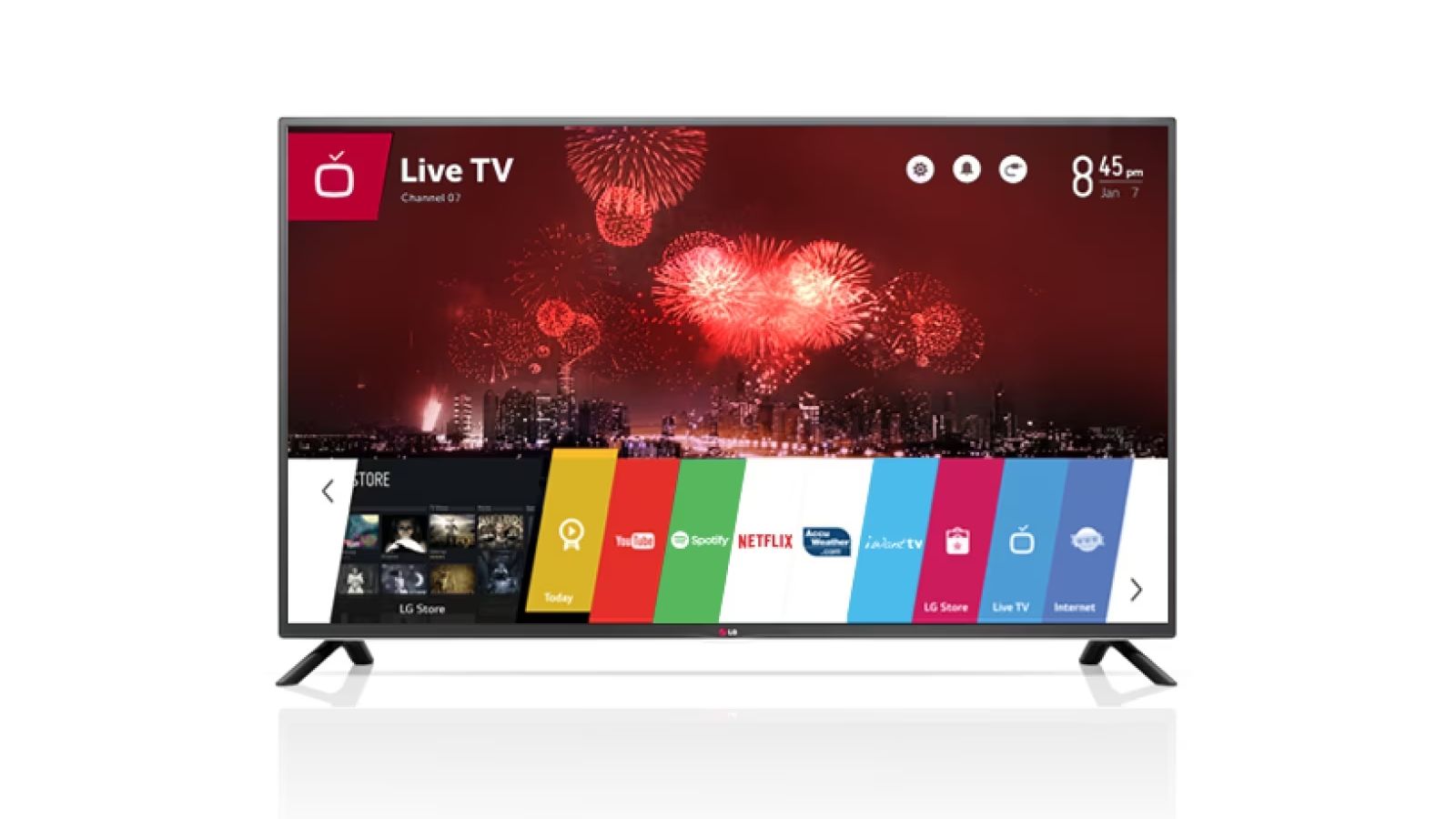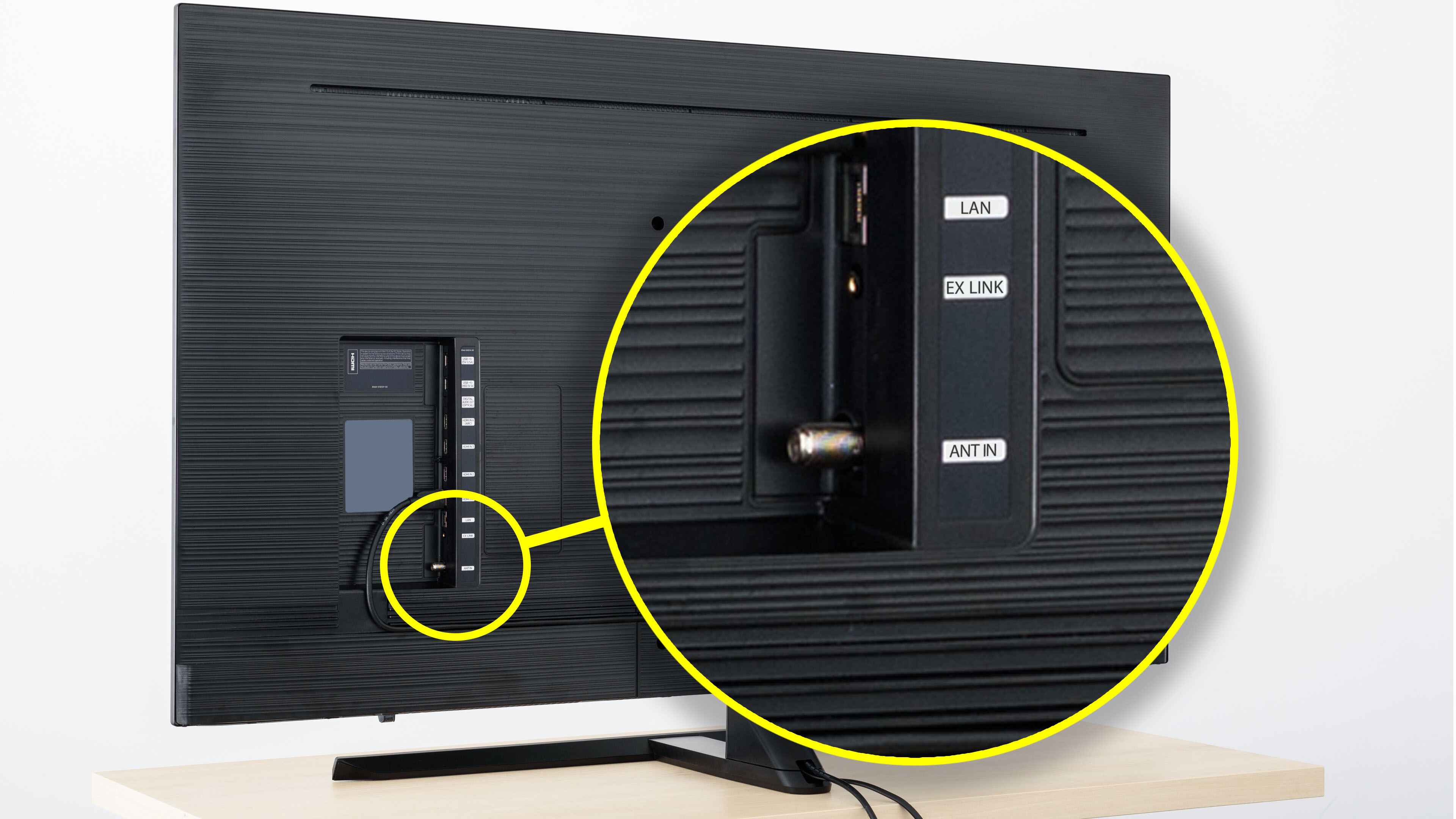Introduction
Are you looking to elevate your TV watching experience? Adding a surround sound system to your LG TV can completely transform your entertainment setup. By immersing yourself in rich and dynamic audio, you’ll feel like you’re right in the middle of the action.
However, connecting a surround sound system to your LG TV might seem like a daunting task. With various audio output options on your TV and different audio input options on your sound system, it can be confusing to figure out the right connections. But fear not! This guide will walk you through the process, step by step, to ensure a seamless setup.
Before diving into the technical details, it’s important to understand the basics of a surround sound system. Surround sound is a technique used to replicate the audio experience of a movie theater by using multiple speakers placed strategically around the room. The system creates a three-dimensional soundstage, enveloping you in sound and enhancing your viewing experience.
Now, let’s check that your LG TV has the necessary audio output options. Most modern LG TVs come with various options such as HDMI ARC (Audio Return Channel), optical audio, and headphone jack. These options allow you to connect your TV to external audio devices, including surround sound systems.
On the other hand, your surround sound system might have different audio input options. Common ones include HDMI, optical audio, and RCA (red and white) connectors. Knowing the audio input options available on your sound system will help you choose the right cables and connectors for the connection.
Once you have gathered all the necessary information about your LG TV and surround sound system, it’s time to connect them. Choosing the right cables and connectors is crucial. HDMI cables are widely used for their high-quality audio and video transmission. However, if your devices don’t support HDMI, you can use optical audio cables or RCA cables.
After making the physical connections, you’ll need to configure the audio settings on your LG TV. This ensures that the TV sends the audio signal to your surround sound system correctly. Depending on your TV model, you may have to enable the audio output and select the appropriate audio format.
Finally, it’s essential to test your surround sound system to ensure everything is working as expected. Play a movie or a video with surround sound content to experience the immersive audio. Make sure the audio is coming from all the speakers and adjust the audio settings on your sound system if needed.
By following these steps, you’ll be able to connect your LG TV to a surround sound system and enjoy a cinematic audio experience from the comfort of your home. So let’s get started!
Step 1: Understand the Basics of a Surround Sound System
Before diving into the process of connecting a surround sound system to your LG TV, it’s important to have a basic understanding of how a surround sound system works. Surround sound systems are designed to create a more immersive and realistic audio experience by utilizing multiple speakers strategically placed around the room.
The most common type of surround sound system is a 5.1 setup, which consists of five speakers and one subwoofer. The five speakers are positioned as follows: three speakers at the front (left, center, and right) and two speakers at the back (left surround and right surround). The subwoofer, responsible for reproducing low-frequency sounds, is usually placed near the front speakers.
When you watch a movie or play a video with surround sound content, the audio is mixed to replicate a 360-degree soundstage. This means that different sounds will come from different directions, creating a more immersive experience. For example, if a car is approaching from the right side of the screen, you will hear the sound coming from the front right and moving towards the back right speakers.
To fully experience the benefits of a surround sound system, it’s important to position the speakers correctly. The front speakers should be placed at ear level, facing towards the listener. The center speaker, which is responsible for dialogues and vocals, should be positioned above or below the TV. The surround speakers should be placed slightly behind the listening area, preferably at ear level.
The subwoofer can be placed anywhere in the room as it is omnidirectional. However, placing it in a corner or against a wall can enhance the bass response. Experimentation with subwoofer placement may be necessary to achieve the desired sound quality.
In addition to the 5.1 setup, there are more advanced configurations available, such as 7.1 and Dolby Atmos systems. These systems use additional speakers to create an even more immersive audio experience, with sounds coming from above as well.
Understanding the basics of a surround sound system will help you appreciate the intricacies of the setup process. With this knowledge, you’ll be better prepared to connect and configure your LG TV with a surround sound system, ensuring a truly immersive and cinematic audio experience.
Step 2: Check Your LG TV’s Audio Output Options
Before connecting your LG TV to a surround sound system, it’s essential to check the audio output options available on your TV. These options determine how you can connect your TV to external audio devices, such as a surround sound system.
Most contemporary LG TVs offer various audio output options to accommodate different audio setups. The three most common options are HDMI ARC (Audio Return Channel), optical audio, and the headphone jack.
HDMI ARC is a feature available on newer LG TVs and is the preferred method for connecting to a surround sound system. It allows both audio and video signals to travel through a single HDMI cable. To check if your LG TV has the HDMI ARC feature, look for an HDMI port labeled “ARC” on the back or the side of the TV. Connecting your TV to a surround sound system via HDMI ARC ensures high-quality audio and simplifies the setup process.
If your LG TV doesn’t have HDMI ARC, the next option to check is optical audio. Optical audio outputs use a TOSLINK cable, which transmits digital audio signals. To check if your TV has an optical audio output, look for a small square or rectangular port labeled “Optical” on the back of the TV. Optical audio is a reliable and commonly used method for connecting to a surround sound system.
The third option available on many LG TVs is the headphone jack. This analog output allows you to connect external speakers or a sound system using a standard 3.5mm audio cable. However, it should be noted that the headphone jack may not provide the same level of audio quality as HDMI ARC or optical audio. If you have no other options, it can still be a viable choice.
By inspecting your LG TV’s audio output options, you can determine the best method for connecting your TV to a surround sound system. HDMI ARC is usually the ideal choice, followed by optical audio if HDMI ARC is not available. The headphone jack is a fallback option if no other ports are present.
Once you have identified the audio output options on your LG TV, you can move on to the next step: determining the audio input options on your surround sound system.
Step 3: Determine the Audio Input Options on Your Surround Sound System
Now that you have checked your LG TV’s audio output options, it’s time to determine the audio input options on your surround sound system. This step is crucial in selecting the appropriate cables and connectors for the connection.
Surround sound systems generally offer multiple audio input options to accommodate various devices. The most common input options include HDMI, optical audio, and RCA (red and white) connectors.
If your surround sound system has an HDMI input, it’s recommended to use an HDMI connection for the best audio and video quality. HDMI cables support high-definition audio formats and can transmit both audio and video signals. This is particularly useful if your LG TV has an HDMI ARC output, as you can easily connect the two devices via an HDMI cable.
Another widely used audio input option is optical audio. Many surround sound systems come with an optical audio input, indicated by a small square or rectangular port labeled “Optical” or “TOSLINK.” Optical audio cables transmit digital audio signals, providing a reliable and high-quality connection.
In addition to HDMI and optical audio, some older surround sound systems may have RCA inputs. These inputs use red and white connectors for stereo audio signals. While RCA connections may not support the same level of audio quality as HDMI or optical audio, they can still be a viable option for connecting your LG TV to a surround sound system.
It’s important to check the available audio input options on your specific surround sound system. Refer to the user manual or examine the back panel of the system to identify the input ports. This will help you choose the appropriate cables and connectors for connecting your LG TV to the surround sound system.
Once you have determined the audio input options on your surround sound system, you can proceed to the next step: selecting the right cables and connectors.
Step 4: Choose the Right Cables and Connectors
After identifying the audio output options on your LG TV and the audio input options on your surround sound system, the next step is to select the right cables and connectors for the connection. The choice of cables depends on the available ports on both devices.
If your LG TV has an HDMI ARC output and your surround sound system has an HDMI input, using an HDMI cable is the recommended option. HDMI cables transmit both audio and video signals, making it a convenient and high-quality choice. Ensure that the HDMI cable you choose supports the appropriate HDMI version for optimal compatibility and performance.
If your LG TV has an optical audio output and your surround sound system has an optical audio input, an optical audio cable (TOSLINK) is the ideal choice. These cables transmit digital audio signals and offer reliable and high-quality audio transmission. Make sure to select an optical audio cable of suitable length to comfortably connect the devices.
If your LG TV only has a headphone jack and your surround sound system does not have a corresponding input, you will need to use a 3.5mm audio cable. One end of the cable should have a 3.5mm jack to plug into the TV’s headphone jack, and the other end should have the appropriate connectors for the surround sound system’s audio inputs.
Alternatively, if your surround sound system supports RCA inputs and your LG TV has RCA output connectors (red and white), you can use RCA cables. These cables transmit analog stereo audio signals. Ensure that you correctly match the colors of the RCA connectors with the corresponding ports on both devices.
When selecting cables, it’s important to consider the quality and length of the cables. Higher-quality cables with better shielding can reduce interference and ensure a more reliable connection. Avoid excessively long cables, as they can degrade the audio signal quality. Choose the cable length that allows for a neat and convenient setup without excessive cable lengths.
Once you have selected the appropriate cables and connectors, you are ready to move on to the next step: connecting your LG TV to your surround sound system.
Step 5: Connect Your LG TV to Your Surround Sound System
With the cables and connectors ready, it’s time to connect your LG TV to your surround sound system. Follow these steps to ensure a successful connection:
- Locate the audio output port on your LG TV. This could be an HDMI ARC port, an optical audio port, or a headphone jack.
- Connect one end of the selected cable (HDMI, optical, or 3.5mm audio) to the corresponding output port on your LG TV.
- Find the audio input port on your surround sound system. This could be an HDMI input, an optical audio input, or RCA input ports.
- Connect the other end of the cable to the audio input port on your surround sound system. Ensure a secure and snug connection.
- If you’re using HDMI ARC, make sure to enable the HDMI ARC function on both your TV and your sound system. This can usually be done in the TV’s audio settings menu or by referring to the user manuals.
- If you’re using an optical audio connection, make sure to remove any plastic covers from the tips of the optical audio cable before inserting it into the ports.
- If you’re using RCA cables, match the colors of the connectors to the corresponding ports on both your TV and your sound system.
- Once the cables are securely connected, power on your TV and surround sound system.
- Switch the input/source on your surround sound system to the appropriate audio input, such as HDMI or optical input.
- Adjust the volume on both your TV and surround sound system to a comfortable level.
Ensure that all the connections are tight and secure to prevent any audio signal disruptions or quality issues. Double-check the input settings on both your TV and your sound system to make sure they are properly configured.
Congratulations! Your LG TV is now connected to your surround sound system. Get ready to experience enhanced audio and immerse yourself in your favorite movies, TV shows, and music.
Step 6: Configure the Audio Settings on Your LG TV
Now that your LG TV is connected to your surround sound system, it’s important to configure the audio settings on your TV to ensure that the audio signal is directed to the surround sound system correctly. Follow these steps to configure the audio settings:
- Using your TV remote, navigate to the settings menu on your LG TV.
- Look for the audio settings or sound options within the settings menu.
- Select the audio output option that corresponds to the connection you made to your surround sound system. For example, if you connected using HDMI ARC, select the HDMI ARC option.
- Verify that the audio format is set to a compatible format for your surround sound system. Common options include Dolby Digital, DTS, or PCM.
- Adjust any additional audio settings according to your preferences, such as equalizer settings, surround sound effects, or audio delay.
- Make sure to save or apply the changes in the audio settings menu before exiting.
Configuring the audio settings on your LG TV is important to ensure that the audio signal is properly routed to your surround sound system. By selecting the correct audio output option and format, you enable the TV to send the audio signal to the right destination, resulting in optimal audio performance.
If you encounter any issues with the audio settings or are unsure of the appropriate settings, consult your LG TV’s user manual or contact LG customer support for guidance.
With the audio settings properly configured, you’re now ready to enjoy the immersive audio experience provided by your connected LG TV and surround sound system.
Step 7: Test the Surround Sound System
After connecting your LG TV to your surround sound system and configuring the audio settings, it’s essential to perform a test to ensure that everything is working correctly. Here are the steps to test your surround sound system:
- Play a movie or video with surround sound content on your LG TV. Choose a source that supports surround sound, such as a Blu-ray disc, streaming service, or video game.
- As the content plays, pay attention to the audio coming from each speaker in your surround sound system. This will allow you to confirm that the audio is properly distributed across the different speakers.
- Listen for sounds moving around the room. A well-configured surround sound system will create the illusion of sounds coming from different directions, enhancing the immersive experience.
- Verify that the dialogue and vocals are clear and centered, coming from the center speaker. Adjust the audio settings on your TV or the individual speaker levels if necessary.
- Check the bass response from your subwoofer. Low-frequency sounds, such as explosions or deep music notes, should be well-rendered and add depth to the audio experience.
- If you notice any issues, such as mismatched audio or unbalanced speaker levels, refer to the user manuals of your LG TV and surround sound system for troubleshooting steps. Make sure all the connections are secure and that the audio settings are correctly configured.
- Continue to fine-tune the audio settings on your TV and surround sound system to achieve the desired sound quality. Experiment with different surround sound modes, EQ settings, and volume levels to personalize your audio experience.
By thoroughly testing your surround sound system, you can ensure that it is functioning as intended and delivering the immersive audio experience you desire. If you encounter any persistent issues, consider seeking further assistance from the manufacturer’s customer support or consulting with audio professionals.
With the successful testing of your surround sound system, you can now sit back, relax, and enjoy a cinematic audio experience right in your own home!
Conclusion
Connecting a surround sound system to your LG TV can significantly enhance your audio experience and immerse you in the excitement of your favorite movies, TV shows, and music. By following the steps outlined in this guide, you can successfully connect and configure your LG TV with a surround sound system.
First, understanding the basics of a surround sound system helps you appreciate the intricacies of the setup process. Knowing the different speaker positions and their roles allows you to optimize your audio setup for the best experience.
Next, checking your LG TV’s audio output options and determining the audio input options on your surround sound system ensures that you choose the appropriate cables and connectors for a seamless connection.
Choosing the right cables and connectors is essential for reliable and high-quality audio transmission. Whether it’s using HDMI, optical audio, or RCA cables, selecting the appropriate option based on the available ports on your devices is crucial.
Once you have made the physical connections, configuring the audio settings on your LG TV ensures that the audio signals are properly directed to your surround sound system. Adjusting the audio output options and formats, as well as fine-tuning additional settings, allows you to optimize the audio experience according to your preferences.
Finally, testing your surround sound system by playing surround sound content confirms that everything is working correctly. Listening for audio distribution, clear dialogue, and balanced bass ensures that you can fully enjoy the immersive experience provided by your newly connected LG TV and surround sound system.
Remember to consult the user manuals of your devices and seek appropriate support if you encounter any difficulties during the setup process.
Now that you have successfully connected and configured your LG TV with a surround sound system, sit back, relax, and enjoy a truly cinematic audio experience in the comfort of your own home.







